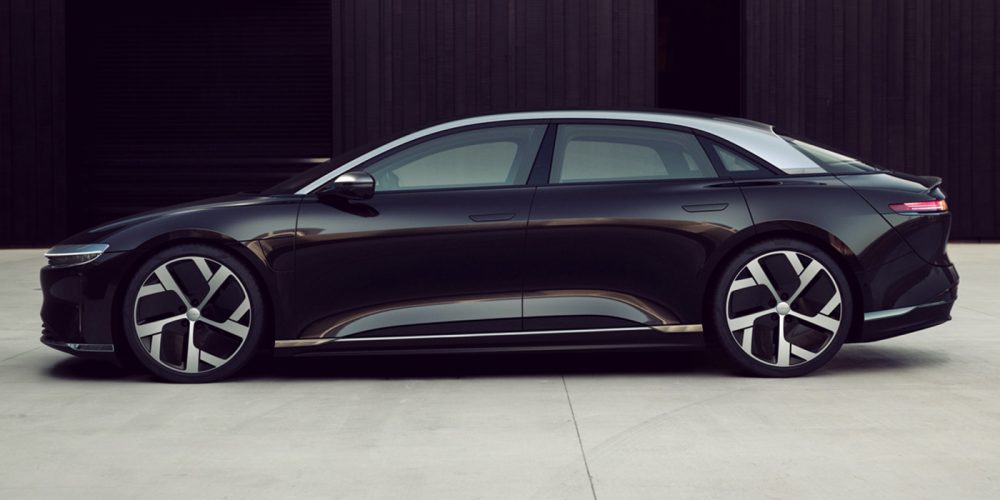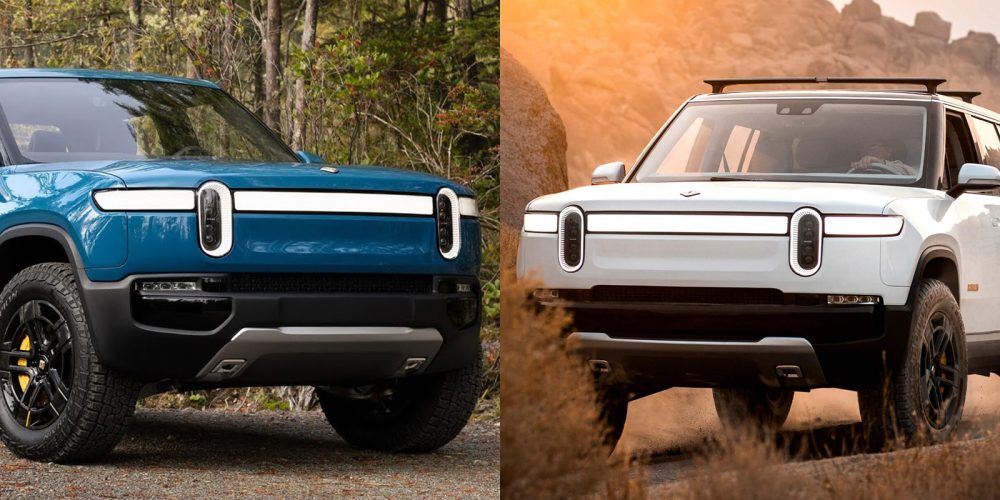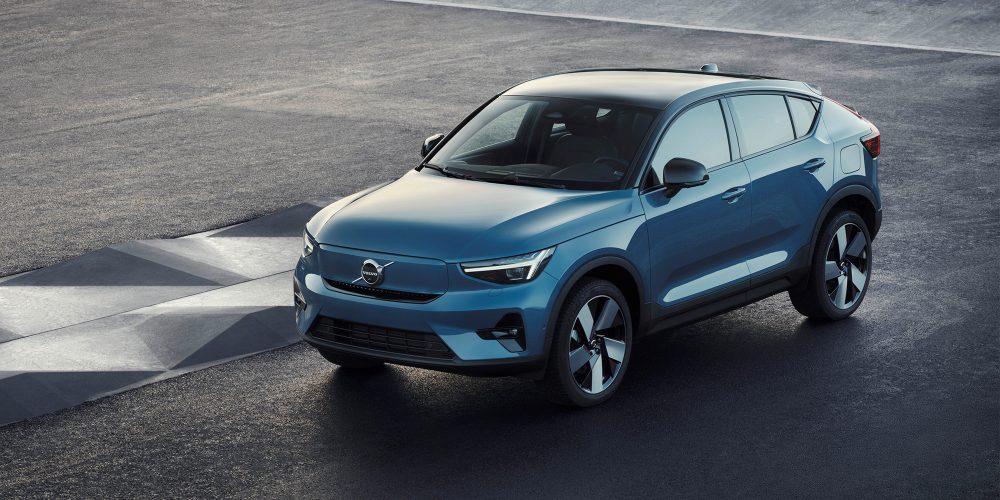
Ever wondered how your electric vehicle updates itself over the air (OTA)? Is it software or firmware? Perhaps you’re wondering if the new EV you’re considering is even fit with over-the-air capabilities.
No matter the reason, we’ve put together a guide outlining how OTA updates work, plus some of their benefits looking toward the future. Furthermore, we’ve compiled a comprehensive list of EV automakers and their current status of OTA implementation.
Table of contents
How over the air (OTA) updates work
In short, these are updates that are delivered and downloaded over-the-air. But it’s not quite that simple, at least what is being transmitted OTA is not. At this point, you’re probably familiar with the process, nonetheless. The updates are delivered remotely from a cloud-based server, through a cellular or WiFi connection, to your connected vehicle. It’s relatively the same process as an update to your smartphone or laptop.
For EVs, OTA updates enable a vehicle’s performance and features to be continuously updated and improved. Technological advancements in these updates give automakers new freedom to constantly “freshen up” finished products remotely. To EV owners, your car now has the potential to get better over time.
FOTA vs. SOTA
As you’ll see in the breakdown by automaker below, not all OTA updates are created equal. The first glaring difference is firmware over the air (FOTA) updates as opposed to software over the air (SOTA) updates.
Software over-the-air (SOTA) updates
SOTA updates are much more common and have been integrated to at least some extent by all of the larger EV automakers. As EVs become more prolific on roads worldwide, their lack of dependency on engines and oil generally means less physical maintenance.
On the flip side, EVs are being manufactured with millions of lines of code, vitally dependent on software to function. In this case, SOTA negates the need for a visit to the shop. SOTA updates can include changes to any software that controls the vehicle’s physical parts or electronic signal processing system. In practice, SOTA updates often tend to apply more to user interfaces like infotainment screens and navigation.
Firmware over-the-air (FOTA) updates
While SOTA updates have quickly become commonplace, updates for FOTA are not as easily accomplished. EV pioneers like Tesla and NIO have been able to crack the code so to speak, but other legacy automakers aren’t so eager to adapt. As a newer concept, the flow of firmware updates over the air requires advanced technology not all automakers possess yet. Cybersecurity, speedy connectivity, and massive computing power all must be present in an EV to receive FOTA updates, not to mention a helluva lot of memory.
Other automakers are still working hard to integrate intelligent gateway chips for FOTA capabilities. These gateways are vital in bridging the communication gap between a device, its sensors, equipment, systems, and the cloud. At this point, FOTA technology is an absolute must to compete with the likes of Tesla.

Over the air capabilities by EV manufacturer
Below is an alphabetical list of dozens of automakers developing and manufacturing consumer EVs. We’ve either researched or spoken to each company directly, to get their latest status on over-the-air software or firmware update capabilities.
The focus, for now, is on automakers that produce consumer-grade, fully-electric vehicles. We will update this list as more companies emerge, and current companies expand their OTA capacities.
BMW
BMW began using OTA updates in 2018 and has slowly increased its presence since. The automaker does offer over-the-air software updates to most of its models, but not to the full extent as some other competitors. Currently, BMW’s OTA updates extend to infotainment systems and to purchase and install “optional equipment features.” Furthermore, updates to the Advanced Driver Assistance Systems (ADAS) can be updated OTA in a limited capacity.
BYD
BYD is an established Chinese manufacturer of battery technologies and various electric machines. The automaker itself has previously admitted that while it’s one of the industry leaders in Chinese hardware, it has room for growth in regard to software. Especially compared to the likes of Tesla.
In 2018, BYD unveiled its DiLink system, offering an intelligent eco-system inside and out of each BYD EV. By utilizing DiLink, BYD became the first Chinese automaker to offer OTA upgrades. Just last month, BYD announced a partnership with Aurora Mobile Limited to collaborate toward digital upgrades of BYDs EVs.
Canoo
As an EV startup, Canoo is in a much smaller pond than many of the other names on this list. That being said, its pond was built on unique innovation and outside-the-box thinking. As an automaker on the cusp of ramping up production on its first EVs, Canoo has all intentions of utilizing OTA capabilities with redundant computing power.
From Electrek‘s previous spotlight on the company, much of its OTA technology is already in place. A spokesperson for Canoo confirms that Canoo’s OTA strategy extends to all of its vehicle systems. Furthermore, the startup has the capability to implement some OTA firmware updates to its existing test vehicles already. More details will certainly come to light when Canoo starts delivering its lifestyle EV later this year.

Faraday Future
Faraday Future is currently conducting road tests during pre-production of its first consumer EV, the FF91. While it continues its research, the automakers have already acknowledged that it is updating the FF91’s software over the air.
Furthermore, such updates pertain solely to the infotainment system, including features like AI voice assistant and location sharing. The EV startup could not be reached for comments about any future expansions in OTA capabilities.
Fiat Chrysler (FCA)
Fiat Chrysler is the first on our list to fit a recurring theme you’ll notice as you read on. Today, the umbrella automotive conglomerate is responsible for Chrysler, Dodge, Jeep, Ram, and Fiat. Although FCA is working on electrified versions of several models in this arsenal, extensive over-the-air software updates are still a ways away.
Currently, FCA only offers OTA firmware updates for its infotainment systems. The updates keep interfaces like navigation fresh, while offering capabilities to add new features like Alexa and CarPlay. Not much else to report other than its Uconnect infotainment software.
Ford
Ford is another legacy automaker making efforts to fully-integrate over-the-air software updates into its fleet… slowly but surely. Last year, Ford began equipping its designed vehicles with OTA capabilities. This includes its new Mustang Mach-E and the upcoming 2022 F-150 electric.
According to Ford’s website, its new platform keeps current EV software running until the new version is ready for activation. Additionally, Ford claims this is something that no other vehicle can do today.
General Motors (GM)
General Motors first introduced OTA tech in what it calls its “digital nerve” platform through GMC. Additionally, GM began to feature OTA software updates on select models under its umbrella. So far this includes a limited amount of models from Buick, Cadillac, Chevrolet, and GMC. The American automaker has previously stated plans to make its entire lineup OTA compatible by 2023.
Honda
Honda currently offers limited OTA capabilities for a select number of its vehicles. Furthermore, all software updates pertain solely to infotainment systems like navigation and CarPlay function. As far as we can tell, the Japanese manufacturer has not offered any updates to its future plans of expanding OTA updates past infotainment software.
Hyundai Motor Group (Hyundai/Kia/Genesis)
Similar to Honda, Hyundai Motor Group is a bit behind in terms of full OTA integration. Currently, the umbrella company offers limited over-the-air software updates to a small number of vehicles. This includes the Hyundai Sonata and Ioniq, the Kia K9, and the Genesis G90. Additionally, these OTA software updates only affect the navigation and voice assistance features.
Last fall, Hyundai Motor Group announced an extended partnership with Nvidia to implement its Drive infotainment systems in all models starting in 2022. The Nvidia Drive system will support OTA updates, but again, that only applies to infotainment software.
Li Auto
Chinese automaker Li Auto does currently offer over-the-air software upgrades. However, like many of the automakers on this list, it has yet to crack the code for firmware updates. Li Auto currently offers OTA software updates to driver interface components within its EVs.
Last fall, Li pushed V1.4 to drivers offering over twenty different upgrades and optimizations. This update included features like Bluetooth connectivity for iPads, assisted driving mileage stats, and new touchscreen interfaces. We are currently unable to find a timeline on any additional OTA functions in the works, though.
Lucid Motors
Lucid Motors is one of the newest automakers on the EV block. With plans to release the initial Dream Edition trim of its flagship Air sedan later this year, genuine hype surrounds the company.
While we have yet to see an Air deliver, there have been countless updates from its manufacturer about what the EV will be capable of. As a result, the ability to provide OTA software updates on a regular basis will remain a foundational part of Lucid Air’s design. Lucid has previously mentioned OTA capabilities regarding its DreamDrive ADAS system, as well as user interface and experience systems.
As the cutting-edge luxury EV comes to market, expect nearly every system of the car to have some capacity for OTA updates. We will know more when Lucid begins deliveries.

Mercedes-Benz
Mercedes-Benz currently offers OTA updates every three months or so. However, those updates pertain entirely to navigation and infotainment features. According to Daimler, the luxury automaker has delivered over 12 million OTA updates to infotainment since 2013.
Through a partnership with Nvidia however, MB is developing an entirely new software architecture. This new architecture is expected to roll out in Mercedes-Benz’s 2024 models and expand globally from there.
NIO
As one of the leading EV automakers in China, NIO offers a variety of over-the-air capabilities to its fleet. In its OS 2.8.0 launch late last year, OTA capabilities for all NIO models were enhanced. Similar to Tesla, This includes both firmware-level upgrades for the entire vehicle system (FOTA) and upgrades for infotainment-related functions (SOTA).
Nissan
Currently, Nissan only offers over-the-air software updates for its customers. This service is called NissanConnect. Like many other automakers, it uses wifi or cellular connectivity to update a Nissan vehicle’s infotainment software. Nissan has not shared any plans to offer FOTA updates at this point.
Polestar
The Swedish automaker began rolling out its first OTA updates on its Polestar 2 EV in late 2020. Its latest update is currently rolling out and includes over-the-air software upgrades to its vehicle cameras, climate control, and radio. Furthermore, the update mentions “range improvements,” and incremental speed improvements when DC charging.
Rivian
We learn more about Rivian’s flagship R1T and R1S EVs every day as the automaker moves closer to first deliveries this summer. While we do not yet know the full extent of Rivian’s OTA capabilities, we do know they will be a key feature in keeping its fleet consistently updated. According to its website, “over-the-air updates continuously enhance the vehicle, updating everything from driving dynamics to the games on your touchscreen.”
This includes updates to Rivian’s driver assistance system it called Driver+. Rivian plans to continuously add functionality to the assistance and safety features compiling Driver+ through OTA updates. Now, we simply need those EVs to come to market in order to learn their full extent.

Tesla
Tesla remains the “OG” in OTA. The American automaker first utilized over-the-air software capabilities back in 2012 with the launch of its Model S sedan. Perhaps you’ve heard of it? With the debut of its Model 3, Tesla set the new standard for FOTA capabilities as well.
Currently, Tesla’s OTA updates extend to its entire fleet and are released almost weekly. Mostly for minor bug fixes, but a few times a year, Tesla owners can look forward to extensive OTA updates. These updates cover everything from extended range, Sentry Mode, and making your Tesla fart on command.
Toyota
Like several of the other legacy automakers headquartered in Asia, Toyota has previously offered lightweight OTA capabilities amongst a very select list of vehicles. Unlike the others, however, it looks to flip the script and veer toward advanced software capabilities.
Last month, Toyota announced a new operating system called Arene, allowing new features to be installed in a car’s existing hardware over the air. Furthermore, Arene will provide a platform for developers to create new software.
Many legacy automakers are still 3-4 years away from OTA capabilities to match Tesla, including Toyota. That said, the automaker believes Arene can eventually become a licensable platform that can compete with Tesla. That is, if Toyota doesn’t ruin the whole EV party for everyone first.
Volkswagen (VW)
Volkswagen is one of the more recent legacy automakers to join the OTA software club. Early in March, VW announced it would begin offering over-the-air software updates for its line of ID EVs, including the ID.3 and ID.4.
So far, Volkswagen is off to a bumpy start with OTA implementation. Last December, Electrek reported software issues VW was having with its ID.3. It appears, however, these issues have now been sorted out. All Volkswagen EVs currently being produced are equipped with the software version ID.2.1, enabling over-the-air software updates.
With that said, VW has been delivering ID.3 and ID.4 EVs to customers for months without the ID.2.1 software. Unfortunately for those early customers, they will have to visit a dealership to receive the software update. Everything should be OTA from then on, though.
Volvo
As the owner of the aforementioned Polestar, Volvo launched the same over-the-air software update capabilities last month. Like the Polestar 2 EV, Volvo’s XC40 Recharge will see increased range and faster DC charging times. Both EVs are based on the same CMA platform and feature (mostly) the same technology.
Additionally, Volvo just unveiled its C40 recharge SUV, sure to holster OTA capabilities as well. You can check the latest software updates from Volvo here.

Weltmeister (WM Motor)
This Chinese automaker is very focused on OTA updates. In fact, all of WM Motor’s EVs are connected over the air. Not only does this make each car a valuable data resource for usage and performance on the roads, but allows for software and hardware upgrades. As a result, WM Motor currently offers constant improvements to drivers through OTA upgrades.
Xpeng
Like several of the other Chinese automakers on this list, Xpeng has followed Tesla’s path of OTA capabilities. Last January, the company launched its most comprehensive update in its six-year history. Its updates have included features like parking assist and a public beta version of its Navigation Guided Pilot (NGP) autonomous driving assistance system.
Who’s Missing?
What companies are we missing? Politely let us know, and we will be sure to update the list as it grows and evolves.
Subscribe to Electrek on YouTube for exclusive videos and subscribe to the podcast.
Author: Scooter Doll
Source: Electrek



